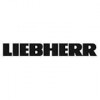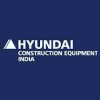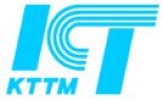Filter interviews by
Tecosim Engineering Services BIW Design Engineer Interview Questions, Process, and Tips
Tecosim Engineering Services BIW Design Engineer Interview Experiences
2 interviews found
(5 Questions)
- Q1. Implementation of gd&t
- Ans.
GD&T is a system for defining and communicating engineering tolerances.
GD&T stands for Geometric Dimensioning and Tolerancing
It is used to define the allowable variations in form, size, and orientation of part features
GD&T symbols are used on engineering drawings to specify the desired tolerances
Proper implementation of GD&T can improve the quality and manufacturability of a design
- Q2. Advantage gd&t and what is bonus tolerance
- Ans.
GD&T provides precise communication of design requirements, while bonus tolerance allows for additional variation beyond basic tolerances.
GD&T (Geometric Dimensioning and Tolerancing) ensures clear and precise communication of design requirements
It allows for more detailed control over form, orientation, location, and profile of features
Bonus tolerance is an additional tolerance that can be applied to a feature beyond ...
- Q3. Types of fits and advantages
- Ans.
Types of fits include clearance fit, interference fit, and transition fit, each offering different advantages.
Clearance fit: allows for easy assembly and disassembly, used in applications where relative motion is required (e.g. sliding fits)
Interference fit: provides a tight connection with no relative movement, used in applications where rigidity is important (e.g. press fits)
Transition fit: offers a compromise betwee...
- Q4. Expalain spring back effect in details
- Ans.
Spring back effect is the tendency of a material to return to its original shape after being deformed.
Spring back effect occurs in materials like metals, plastics, and composites.
It is caused by the release of internal stresses that were introduced during the forming process.
Factors affecting spring back include material properties, forming process, and tooling design.
Examples include metal sheets returning to their or
- Q5. What are the product designguidelines
- Ans.
Product design guidelines are principles and standards that help ensure the quality, functionality, and manufacturability of a product.
Consider the target audience and their needs
Ensure the design is user-friendly and intuitive
Follow industry standards and regulations
Optimize for manufacturability and cost-effectiveness
Prioritize safety and durability
Incorporate feedback from stakeholders and end-users
Use sustainable m...
Skills evaluated in this interview

(2 Questions)
- Q1. It's all about your work experience
- Q2. Design standards and about your past experience
(1 Question)
- Q1. Learn quickly to do the given task
(1 Question)
- Q1. It's all about your past work experience and how goos fit for the organisation
Interview Preparation Tips
Top trending discussions






Interview questions from similar companies

I applied via Walk-in and was interviewed before Sep 2021. There were 2 interview rounds.

(1 Question)
- Q1. About previous work relevant motor calculation
Interview Preparation Tips

I applied via Approached by Company and was interviewed in May 2023. There were 2 interview rounds.

(2 Questions)
- Q1. 1) Hydraulics details
- Q2. GD&T explain, the difference between different GD&T
- Ans.
Geometric Dimensioning and Tolerancing (GD&T) is a system for defining and communicating engineering tolerances.
GD&T is a system used to define and communicate engineering tolerances for manufacturing processes.
Different GD&T symbols include position, concentricity, profile, perpendicularity, and parallelism.
Each GD&T symbol has a specific meaning and is used to control different aspects of a part's geometry.
For exampl...
Interview Preparation Tips
- Hydraulics
- gd&t
Skills evaluated in this interview

I applied via Naukri.com and was interviewed in Sep 2021. There was 1 interview round.
Interview Questionnaire
1 Question
- Q1. Material of rotavator blades
- Ans.
Rotavator blades are commonly made of hardened steel or boron steel.
Hardened steel is a popular choice for rotavator blades due to its durability and resistance to wear and tear.
Boron steel is another option that offers high strength and toughness.
Other materials such as carbon steel and alloy steel may also be used depending on the specific application.
The choice of material will depend on factors such as the type of ...
Interview Preparation Tips

(5 Questions)
- Q1. What means the General tolerances
- Ans.
General tolerances refer to the acceptable range of variation in dimensions or properties of a part or product.
General tolerances are typically specified in engineering drawings to ensure parts fit and function properly.
They are usually expressed as a range of acceptable values, such as +/- 0.1mm.
Tolerances can vary depending on the specific requirements of the part or product.
Examples of general tolerances include dim...
- Q2. What is the material for wheel, Pin
- Ans.
The material for wheel is typically rubber or plastic, while the material for pin is usually metal such as steel or aluminum.
Wheel material is commonly rubber or plastic for flexibility and durability
Pin material is usually metal like steel or aluminum for strength and stability
- Q3. What are the grades of Hardwares like Screw, nut washer
- Ans.
Hardware grades are typically classified based on material composition, strength, and corrosion resistance.
Hardware grades are often denoted by a combination of letters and numbers, such as Grade 8.8 or Grade 316.
Higher grade numbers generally indicate a higher tensile strength or corrosion resistance.
Common grades for screws include Grade 2, Grade 5, and Grade 8, with Grade 8 being the strongest.
For nuts and washers, ...
- Q4. How to calculate motor power
- Ans.
Motor power can be calculated using the formula: Power (W) = Torque (Nm) x Speed (RPM) / 9.548
Calculate the torque required for the application
Determine the speed at which the motor will operate
Use the formula Power (W) = Torque (Nm) x Speed (RPM) / 9.548 to calculate motor power
- Q5. How welds are considered
- Ans.
Welds are critical in design engineering for joining metal components together.
Welds must be strong enough to withstand the intended load and stress.
Proper welding techniques and materials must be used to ensure the integrity of the weld.
Inspections and testing should be conducted to verify the quality of the weld.
Consideration should be given to factors such as joint design, welding process, and material compatibility...
Skills evaluated in this interview


(2 Questions)
- Q1. Experience in software
- Ans.
Extensive experience in various software applications and programming languages.
Proficient in programming languages such as Java, Python, and C++
Experience with software development tools such as Git, JIRA, and Jenkins
Familiarity with database management systems such as MySQL and MongoDB
Experience with web development frameworks such as React and Angular
Ability to learn and adapt to new software quickly
- Q2. Technical knowledge and skills
Interview Preparation Tips
Skills evaluated in this interview

Senior Engineer Interview Questions & Answers
Hyundai Construction Equipmentposted on 9 Sep 2021
I applied via Referral and was interviewed in Mar 2021. There were 3 interview rounds.
Interview Questionnaire
2 Questions
- Q1. About Process related to Assembly line
- Q2. Details of assembly line sequence
- Ans.
The assembly line sequence involves a step-by-step process of assembling parts to create a final product.
The process starts with the arrival of raw materials
Parts are then assembled in a specific order
Quality checks are performed at various stages
The final product is packaged and shipped
Efficiency and safety are key considerations throughout the process
Interview Preparation Tips

Junior Engineer Interview Questions & Answers
Hyundai Construction Equipmentposted on 23 Sep 2022

Discussed on Denomination topic
(2 Questions)
- Q1. About machining information
- Q2. About instrument information
(1 Question)
- Q1. Personal information questions
Interview Preparation Tips

Junior Engineer Interview Questions & Answers
Toyota Material Handlingposted on 1 Feb 2025
I appeared for an interview before Feb 2024.
Based on technical theory knowledge
It's on your technical theory knowledge
(2 Questions)
- Q1. What's Ohm's law ?
- Ans.
Ohm's law states that the current flowing through a conductor is directly proportional to the voltage across it, and inversely proportional to the resistance of the conductor.
Current (I) is directly proportional to voltage (V) and inversely proportional to resistance (R): I = V/R
It is named after German physicist Georg Simon Ohm
It is commonly used in electrical engineering to calculate current, voltage, and resistance
- Q2. Why we hire you ?
- Ans.
I have a strong technical background, excellent problem-solving skills, and a passion for learning and growing in the field of engineering.
I have a Bachelor's degree in Engineering with a focus on [specific field].
I have completed internships at [company name] where I gained hands-on experience in [relevant skills].
I am proficient in [programming languages/tools] and have a strong understanding of [engineering principl
Interview Preparation Tips
Tecosim Engineering Services Interview FAQs
Tell us how to improve this page.
Tecosim Engineering Services Interviews By Designations
- Tecosim Engineering Services Project Engineer Interview Questions
- Tecosim Engineering Services Design Engineer Interview Questions
- Tecosim Engineering Services Senior Design Engineer Interview Questions
- Tecosim Engineering Services BIW Design Engineer Interview Questions
- Tecosim Engineering Services Process Simulation Engineer Interview Questions
- Tecosim Engineering Services Production Engineer Interview Questions
- Tecosim Engineering Services Junior Project Engineer Interview Questions
- Tecosim Engineering Services Trainee Interview Questions
- Show more
Interview Questions for Popular Designations
- Design Engineer Interview Questions
- Mechanical Engg. Design Interview Questions
- Senior Design Engineer Interview Questions
- Electrical Design Engineer Interview Questions
- Structural Design Engineer Interview Questions
- Piping Designer Interview Questions
- Auto CAD Designer Interview Questions
- Junior Design Engineer Interview Questions
- Show more
Tecosim Engineering Services BIW Design Engineer Interview Process
based on 1 interview
Interview experience
Interview Questions from Similar Companies
Fast track your campus placements
|
Design Engineer
122
salaries
| ₹2.7 L/yr - ₹7 L/yr |
|
Senior Design Engineer
44
salaries
| ₹4.9 L/yr - ₹10 L/yr |
|
CAE Engineer
29
salaries
| ₹2.2 L/yr - ₹6.2 L/yr |
|
Lead Engineer
27
salaries
| ₹6.9 L/yr - ₹16 L/yr |
|
Project Engineer
19
salaries
| ₹3.6 L/yr - ₹7.7 L/yr |

Gilbarco Veeder Root

Kirloskar Toyota Textile Machinery

L&T–MHI Power Boilers

Hyundai Construction Equipment
- Home >
- Interviews >
- Tecosim Engineering Services Interview Questions >
- Tecosim Engineering Services BIW Design Engineer Interview Questions









